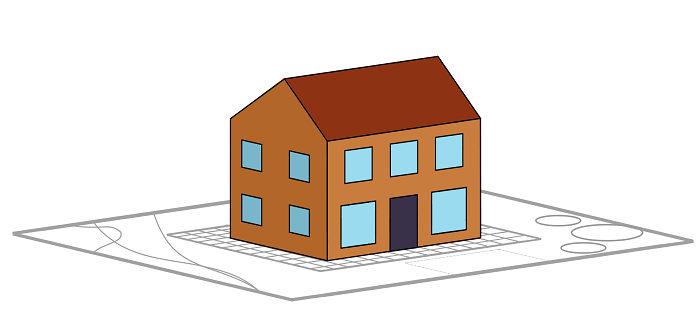Certified by the following organisations

SAP is a complicated process and calculation used to assess the energy efficiency of new build and converted domestic properties, and to find out if they comply with building regulations. In the end, you will be provided with a SAP EPC (or draft, if the property hasn’t been built yet) and compliance report, which building control requires as part of their sign-off process.
SAP calculations are also used to demonstrate he compliance of over glazed extensions to Part L of building regulations. See more about SAP Extension Calculations here.
The SAP process can be used for both design stage properties (yet to be built) or properties that have already been built, although it is recommended that SAP is first carried out prior to commencing works on the build as it’s easier to change things at this stage if the building is not meeting compliance standards.
Below we’ve explained the process in easy to understand sections.

A SAP accredited assessor will use specialist software, such as Design Builder, to create a 3D model of a building, based on the architectural plans provided.

The dimensions and orientations of each surface that make up the envelope of the building are entered into the SAP software.

The thermal performance (also known as “u-values”) of each surface are calculated and processed along with the details of the heating, lighting and ventilation of the property.

| Surface | U-Value |
|---|---|
Wall |
0.15 |
Roof |
0.11 |
Floor |
0.16 |
Windows |
0.4 |
Air Tightness |
5 |

| Surface | U-Value |
|---|---|
Wall |
0.18 |
Roof |
0.13 |
Floor |
0.13 |
Windows |
1.4 |
Air Tightness |
5 |
The u-values of your property (the actual property) are loaded into the SAP calculation, along with details of the heating, lighting and ventilation, and the CO₂ emissions are calculated.
This process is duplicated with the u-values and details of the heating, lighting and ventilation of the notional property, which is one that is the exact same as yours, but with pre-set (notional) values, determined by the building regulations, which are hard coded into the SAP software.
| Surface | U-Value |
|---|---|
Wall |
0.18 |
Roof |
0.13 |
Floor |
0.13 |
Windows |
1.4 |
Air Tightness |
5 |
The u-values and other specifications of the actual property must be at least as good as the notional values, or make up for it in another area so that the overall CO₂ emissions figure is the same or better. However, none of the u-values in the actual property can be worse than the threshold (maximum allowable) values.
In the example above, the actual floor u-value is worse than the notional floor u-value, however the roof and wall u-value makes up for this, making the overall actual average better than the notional average.
The SAP calculation is complicated, using 2000 data points and taking many things into account, such as orientation, air tightness, u-values, etc. In the end, the overall Co₂ emissions must be at least as good as the notional building's result to pass.
New builds and conversions have to comply with different standards, and the requirements for conversions are reduced.


SAP - Standard Assessment Procedure.
Design Builder - Specialist CAD software used to model buildings.
CAD - Computer Aided Design.
U-Values - The number used to describe the thermal performance of a surface.
Actual Property - This refers to the building that will be, or has been built.
Notional Property - This refers to the property that your actual property will be compared against. The notional property is the exact same shape, size and orientation as yours, but loaded with pre-set values for thermal performance of surfaces (U-Values), heating system efficiencies, air tightness, etc.
Threshold Values - These values dictate the minimum that any u-value of the actual property can be. These should NOT be used as a basis for the actual property u-values, as a property will not pass SAP with u-values so high.
Part L1A - The part of building regulations that new build properties must comply with.
Part L1B - The part of building regulations that converted properties must comply with.
DER - Dwelling Emission Rate (of the actual building). Measured in kgCO₂ per m².
TER - Target Emission Rate (of the notional building). Measured in kgCO₂ per m².
DFEE - Dwelling Fabric Energy Efficiency (of the actual building). Measured in kWh/m2 per year.
TFEE - Target Fabric Energy Efficiency (of the notional building). Measured in kWh/m2 per year.
If you have further questions about the process, or any other words, terms or abbreviations please don't hesitate to get in touch.
You may also be interested in:
